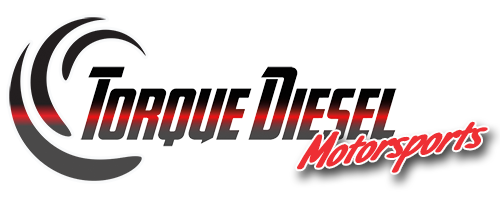Where High Performance meets Higher Standards
Technical Articles
Downloadable PDFs
- Installation Guide
- Common Failures – Fuel Contamination
- Common Failures – Poor Filtration
- Common Failures – Improper Installation
- Injector Nozzles – DGV and DRST
- Injector Nozzles – Sac and VCO
- Injector Operation
- 5.9L Cummins Stage 1 Injector
- 6.7L Cummins Stage 1 Injector
- LB7 6.6L Duramax Stage 1 Injector
Technical Glossary Terms
Spray Angle: The angle in degrees between the centerline of the two furthest nozzle holes on the injector tip. This measurement is critical because the spray angle is engineered to work with a specific piston design and can greatly affect performance and engine life. A spray angle too large can result in spraying fuel outside the piston bowl and too narrow of an angle can cause problems with fuel atomization.
VCO Nozzle: Valve Controlled Orifice – A type of nozzle where the nozzle needle seals directly against the nozzle openings.
Sac Nozzle: A type of nozzle where the nozzle needle seals above a fuel sac that contains the nozzle openings.
LPM: Liters Per Minute – A reference of flow rate that is often used to describe the flow of nozzles that have been modified.
Extrude Hone: Process of increasing flow rate of a nozzle by passing dense abrasive paste through the nozzle holes to increase their diameter.
Hydro-grind: Similar process to extrude honing typically uses a less dense fluid in a more controlled procedure. Often used by OEM for fine finishing of nozzles to remove burrs after the initial EDM procedure.
EDM: Electro Discharge Machining is a manufacturing process where a desired shape is obtained using electrical discharges. An electrode is used to create nozzle holes in injector tips with extreme precision.
Matched Set: A grouping of 4, 6, or 8 injectors, depending on application, whose flow rates are within a defined margin.
VGT: Variable Geometry Turbocharger – A turbocharger that, through various mechanisms, can change the effective inlet area. This is done to minimize turbo lag during low speed conditions and maximize available boost pressure during high speed operations.
EGT: Exhaust Gas Temperature – EGT is a measure of how hot the combustion process is in the cylinder. It is also directly related to the air/fuel ratio. A rich air/fuel ratio will create a high EGT. Rich air fuel ratios can be caused by too much fuel or not enough air.
DPF: Diesel Particulate Filter – This is a part of modern emissions exhaust gas treatment. The DPF is designed to remove soot, combustion particulate, from the exhaust gas stream.
EGR: Exhaust Gas Recirculation – A method used in modern emissions treatment systems to reduce NOx or Nitrogen Oxides from the exhaust gas. It functions by recirculating a portion of the exhaust gas back to the engine intake.
Boost Pressure: Measurement of intake air pressure relative to the ambient atmospheric pressure.
Air Density: Measure of mass per volume of air. The equation to calculate density also relates the temperature and pressure of the air. The optimum conditions put the largest mass of air at the lowest possible temperature in the smallest volume.
Torque: The measure of the turning force on an object.
Horsepower: The measure of power or the rate at which work is done. One horsepower is the amount of work required to lift 75 kilograms by 1 meter in 1 second.
DOC: Diesel Oxidation Catalyst – A type of catalytic converter most commonly used on diesel engines. Its purpose is to oxidize exhaust gas hydrocarbons into carbon dioxide and water.
SCR: Selective Catalyst Reduction – A process in modern emissions controls that uses a urea injection system to convert NOx in the exhaust gas stream into nitrogen gas and water.
Pulse Width: The measure of the voltage pulse sent to the injector to activate the solenoid, this is the injector “on” time.
Turbo Lag: The time between a demand for increase in power and the turbocharger increasing the intake pressure.
Tuner/Programmer/Chip: Either software installed into the ECM or hardware plugged into the ECM that is used to create higher horsepower and torque outputs by means of increasing boost pressure, increasing pulse width, increasing rail pressure, and adjusting timing.
Fuel Rail: A fuel accumulation manifold that supplies pressurized fuel from the high pressure pump to the injectors.
Rail Pressure: Measure of the pressure of the accumulated fuel in the rail
Cold Air Intake: Modification of the factory air intake that provides a larger diameter intake tube and less restrictive air filter in order to increase the amount of air taken into the engine.
Intercooler: A type of charge air cooler used to decrease the temperature and increased the air density of the compressed air provided by the turbocharger.





